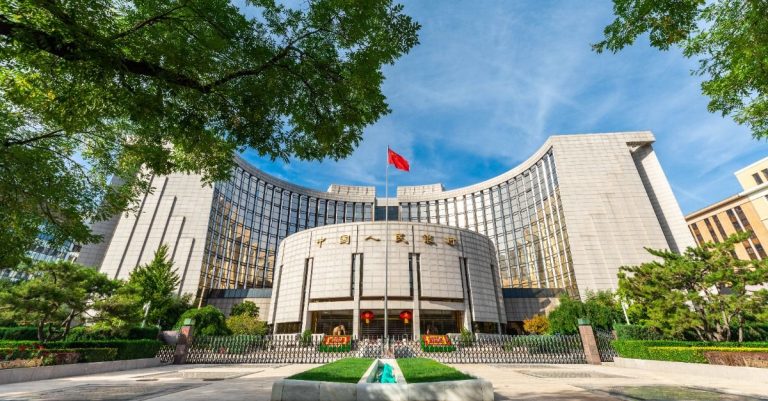China maintained its medium-term lending rate on Monday, signaling its central bank’s focus on stabilizing the yuan amid currency pressures exacerbated by Donald Trump’s victory in the US presidential election.
The People’s Bank of China (PBOC) held the medium-term lending facility (MLF) rate steady at 2% for 900 billion yuan ($124.26 billion) in one-year loans to select financial institutions, as per the bank’s official statement.
During Monday’s operation, bid rates ranged between 1.90% and 2.30%, with total MLF loans now amounting to 6.239 trillion yuan, according to the central bank.
UBS Investment Bank’s chief China economist, Wang Tao told CNBC that the MLF rate will remain at 2% through this year, before declining to 1.2% by the end of 2025 and further to 1.0% in 2026.
Similarly, Pinpoint Asset Management President Zhiwei Zhang anticipates that the PBOC will refrain from additional rate cuts until the incoming US administration assumes office in January, which could introduce higher tariffs on Chinese exports.
Zhang noted that the US dollar’s sharp appreciation has pressured global currencies, including the renminbi (RMB), and stated that the central bank is unlikely to rush into interest rate cuts.
Since the US presidential election on November 5, the offshore yuan has declined by over 2%.
The yuan’s depreciation against the dollar has been ongoing, with the offshore currency losing approximately 3.3% since September 24, when Beijing announced its first round of stimulus measures aimed at bolstering the slowing economy. The offshore yuan traded at 7.2472 on Monday.
Gary Ng, senior economist at Natixis, stated that the PBOC is likely to adopt a cautious approach, assessing policy outcomes step by step.
While China might favor a weaker yuan to support exports, Ng suggested that authorities would aim for gradual depreciation rather than abrupt shocks.
Last week, the central bank also kept the 1-year and 5-year loan prime rates unchanged at 3.1% and 3.6%, respectively.
The 1-year LPR primarily influences corporate and household loans, while the 5-year LPR serves as a benchmark for mortgages.
Economists predict the PBOC may lower the reserve requirement ratio (RRR) for commercial banks in the coming months to balance economic revitalization with exchange rate stability.
PBOC Governor Pan Gongsheng previously hinted that the RRR could be reduced by 25 to 50 basis points by year-end, contingent on liquidity conditions.
Pan also suggested a potential 20 basis-point cut to the seven-day reverse repo rate before the year concludes, emphasizing the PBOC’s reliance on a diverse set of rates to implement monetary policy, in contrast to the U.S. Federal Reserve’s singular focus on a benchmark interest rate.
The post China’s central bank holds medium-term loan rate steady as yuan struggles appeared first on Invezz

